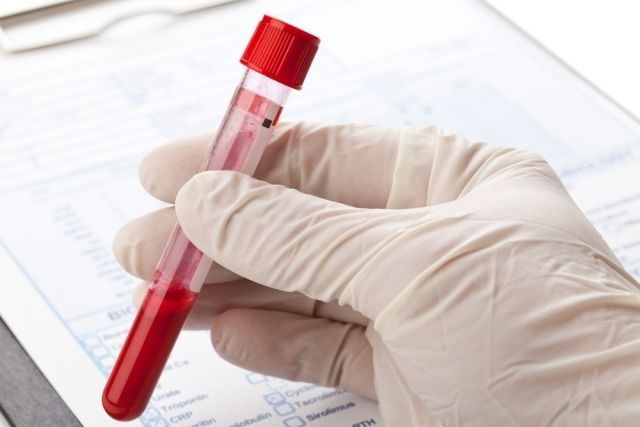An ESR (erythrocyte sedimentation rate) blood test is very useful for detecting inflammation or infections in the body. It can help to confirm a common cold, bacterial infection, or an inflammatory disease like arthritis or pancreatitis.
This test measures the speed of separation between the red blood cells and the plasma (the liquid component of blood) when blood is placed under gravity. The separation between these two will be faster if there is an inflammatory process going on, as inflammation will lead to the formation of proteins that decrease the thickness of blood and causes it to "drip" faster. ESR is considered to be elevated when it is over 15 mm in men and over 20 mm in women.
ESR is a very sensitive test as it can easily detect inflammation, however it is not specific. It does not indicate the type of inflammation, where it is present or the severity of inflammation. Therefore, ESR levels should be evaluated by a doctor in comparison to lab testings and the physical exam.

What it’s for
The ESR test is used to identify whether there if inflammation or an infection occurring in the body. The results can confirm a:
1. High ESR level
There are many conditions that can lead to an elevated ESR level, like a viral or bacteria infection (e.g. sinusitis, tonsilitis, pneumonia, UTI, or diarrhea). This test is also very used to evaluate and monitor the evolution of some illnesses, like:
- Polymyalgia rheumatica, which is an inflammatory muscle disease
- Temporal arteritis, which is an inflammatory blood vessel disease
- Rheumatoid arthritis, which is an inflammatory joint disease
- Vasculitis, which is an inflammatory vessel wall disease
- Osteomyelitis, which a bone infection
- Tuberculosis, an infectious disease
- Cancer
In addition, ESR levels can be affected with any condition that alters the dilution or composition of blood. Some examples include pregnancy, diabetes, obesity, heart failure, kidney failure, alcoholism, thyroid problems or anemia.
2. Low ESR level
Decreased ESR levels do not generally indicate any abnormalities. However, there are some conditions that can keep the ESR abnormally low, which may delay the detection of inflammation or infection. Some of these conditions include:
- Polycythemia, which is an increase in red blood cells
- Leukopenia severa, which is an increase in white blood cells
- Corticosteroid use
- Hypofibrinogenemia, which is a blood clotting disorder
- Hereditary spherocytosis, which is a type of anemia that is passed on through genetics
Therefore, a doctor should always interpret ESR results alongside a physical exam and other lab tests, as the results may not always be compatible with the way the patient is presenting. The doctor should order more specific testing, like the CRP test, when looking for more specific conditions, like infections.
How it is tested
To complete an ESR blood test, the laboratory tech will collect a blood sample, which is placed in a closed recipient. Then the amount of time it takes for the red blood cells to separate from the plasma and accumulate at the bottom of the recipient is observed.
After about 1 or 2 hours, the amount of accumulated red blood cells is measured in millimeters, and reported in millimeters per hour (mm/h). ESR tests do not require any extra preparation on fasting.
Reference ranges
The reference ranges for ESR results vary among men, women and children.
-
In men:
- in 1 hour - up to 15 mm;
- in 2 hours - up to 20 mm.
- In women:
- in 1 hour - up to 20 mm;
- in 2 hours - up to 25 mm.
- In children:
- Values between 3 - 13 mm.
ESR results in the first hour are the most important during the first hour, therefore these are most used during clinical evaluations.
The more intense the inflammation, the higher the ESR value. Rheumatologic illnesses and cancer can cause such severe inflammation that ESR rates can be above 100 mm/h.
